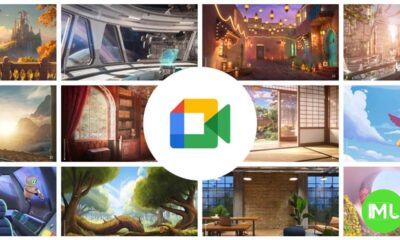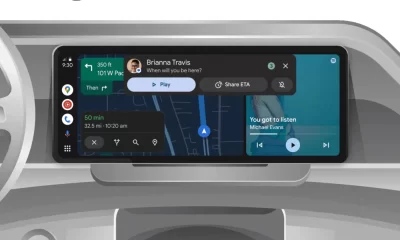Google enhances Gemini with Spotify control and brings full tasks integration to Calendar on Android

Google is making strides with its AI and productivity tools. The latest updates to its Gemini assistant and Google Calendar are noteworthy, improving user experiences across music control and task management.
Gemini’s Spotify Extension: Control Music with Your Voice
Gemini, Google’s AI assistant, continues evolving as it replaces the former Google Assistant. New features, called “extensions,” enhance Gemini’s capabilities, and the Spotify extension is now rolling out globally. This extension allows you to use Gemini to control Spotify with voice commands or text inputs. Here’s what you can do with it:
- Play Specific Tracks: Request a particular song, album, or podcast.
- Search for Playlists: Discover curated playlists or stations.
- Find Songs by Lyrics: If you can recall a line from a song, Gemini can help locate it.
To get started, you must connect your Spotify account to Gemini. This feature is initially limited to the English language and requires a Spotify Premium subscription for playing specific tracks. However, note that the Spotify extension works only in the primary Gemini app and not in other integrations, like Messages or the web.
If you have multiple music apps connected to Gemini, make sure to specify Spotify as your default to avoid conflicts.
Limitations and Availability
While the Spotify extension adds significant functionality, it has some limitations:
- Language Support: Currently, it works only with English.
- Premium-Only Features: Free Spotify accounts are restricted in functionality.
- Platform Restrictions: The extension is exclusive to Android users and is unavailable for Gemini on iPhone or web versions.
Google Calendar Introduces Full Tasks Integration on Android
In another significant update, Google Calendar for Android now integrates Google Tasks directly into the app. This feature is rolling out as a server-side update, but you’ll need version 2024.46.1 of the app from the Play Store for the best experience.
Here’s what’s new with this integration:
- Unified Interface: A Google Tasks icon now appears in the top bar of Calendar, allowing you to access your tasks with a single tap.
- Consistent Design: Tasks retain a Dynamic Color background and share the floating action button (FAB) design with Calendar for a cohesive look.
- Seamless Synchronization: Tasks created or updated in Calendar reflect immediately in the standalone Tasks app, and vice versa.
Improved Functionality
When using Google Calendar’s Tasks view:
- Create Dated Tasks: Use the Calendar FAB to add tasks tied to specific dates.
- Stand-Alone Tasks: To create undated tasks, switch to the dedicated Tasks view.
- Persistent View: If you leave the app while in Tasks, the view remains open upon return.
- Cross-Account Sync: Switching Google Accounts in Tasks instantly reflects in Calendar.
Why Keep the Google Tasks App?
Despite this integration, the standalone Google Tasks app still offers unique features, such as:
- List Widget: A dedicated widget for task lists, which Calendar lacks.
- Material You Redesign: A possible future update could make the standalone app even more appealing.
There’s no indication yet that Google plans to discontinue the standalone app. Moreover, while this update benefits Android users, Google has not confirmed if the integration will come to iOS.
Enhanced Notifications
If both Google Tasks and Calendar apps are installed, notifications will now include a “Reschedule” button, making task management more flexible.
Conclusion
Google’s updates to Gemini and Calendar showcase its focus on enhancing AI tools and productivity apps. With Spotify integration, Gemini users gain hands-free control over music, while Calendar’s deep Tasks integration simplifies task management for Android users. These features, though currently limited in scope, point to a future where Google’s ecosystem becomes even more cohesive and user-friendly.
Google Meet gets a fresh new look with Material 3 design

Google Meet is getting a big update to its look, thanks to the new Material 3 design. This change brings a cleaner and more modern style to the video calling app, making it easier and more enjoyable to use.
With Material 3, Google Meet now has rounder buttons, softer colors, and better spacing between elements. The main controls, like the microphone, camera, and end call buttons, are now larger and easier to tap. The icons and text are also clearer, which helps users find what they need quickly during a call.
Another improvement is the new “expressive” color system. This feature lets the app’s colors match your device’s wallpaper or theme, giving each user a unique and personalized experience. The changes also make Google Meet more accessible, as the new design is easier to read and use for everyone, including people with vision difficulties.
These updates are rolling out to both web and mobile versions of Google Meet. Google says the new look will help people feel more comfortable and focused during their meetings. Overall, the Material 3 update makes Google Meet not only look better but also work better for all its users.
Android
Easy ways to change Android Auto’s look with light and dark themes

Android Auto is a helpful tool that lets you use your phone’s apps safely while driving. It connects your phone to your car’s screen, making it easier to use maps, music, and calls. One of the features many people like is the ability to change how Android Auto looks by switching between light and dark themes.
How to switch between light and dark themes
Android Auto offers two main themes: light and dark. The light theme uses brighter colors, which can make the screen easier to see during the day. The dark theme uses darker colors, which can be more comfortable for your eyes at night or in low light.
To change the theme, follow these steps:
- Open the Android Auto app on your phone.
- Go to the settings menu.
- Find the “Theme” option.
- Choose between “Light,” “Dark,” or “Set by car” (this lets your car decide the theme based on the time of day or your car’s settings).
Why themes matter
Using the right theme can make driving safer and more comfortable. The light theme is good for bright days, while the dark theme helps reduce glare at night. Having these options means you can pick what works best for you, making Android Auto easier to use in any condition.
In short, Android Auto’s theme options are simple to use and help you drive more safely by making the screen easy to see, no matter the time of day.
Google Drive and Files by Google get fresh updates for easier use

Google is rolling out some helpful updates to two of its popular apps: Google Drive and Files by Google. These changes are designed to make managing your files and watching videos much smoother.
First, Google Drive is getting a new video player. Now, when you upload a video to Drive and open it, you’ll notice a fresh look that matches Google’s latest design style. The controls, like play and pause, are easier to use and look cleaner. This update makes it simpler to watch videos directly in Drive without needing to download them first.
Meanwhile, the Files by Google app is also getting a makeover. The app is adopting Google’s Material 3 design, which means it looks brighter and more modern. The buttons and menus are easier to see and use, making it simpler to find, move, and organize your files. There are also new color options and improved icons, so everything feels more user-friendly.
Both updates show Google’s commitment to making its apps more helpful and enjoyable to use. Whether you’re watching videos in Drive or sorting files on your phone, these changes aim to save you time and make things less complicated. If you use these apps, keep an eye out for these new features—they should arrive soon!
-

 Apps1 year ago
Apps1 year agoGboard Proofread feature will support selected text
-

 News1 year ago
News1 year agoSamsung USA crafting One UI 6.1.1
-

 Apps12 months ago
Apps12 months agoGoogle Contacts app testing new Besties Widget
-

 AI12 months ago
AI12 months agoGoogle Pixel 9 Pro may come with a complimentary one-year Gemini Advanced subscription
-

 News1 year ago
News1 year agoBreaking: Samsung Galaxy S22 may get Galaxy AI features
-

 Apps12 months ago
Apps12 months agoGoogle working on a new video editing feature for its Photo app
-

 Apps12 months ago
Apps12 months agoGoogle Maps lets you report traffic jams and accidents on Apple CarPlay, but not on Android Auto
-

 Apps12 months ago
Apps12 months agoGoogle Messages app will transform MMS chats into RCS










